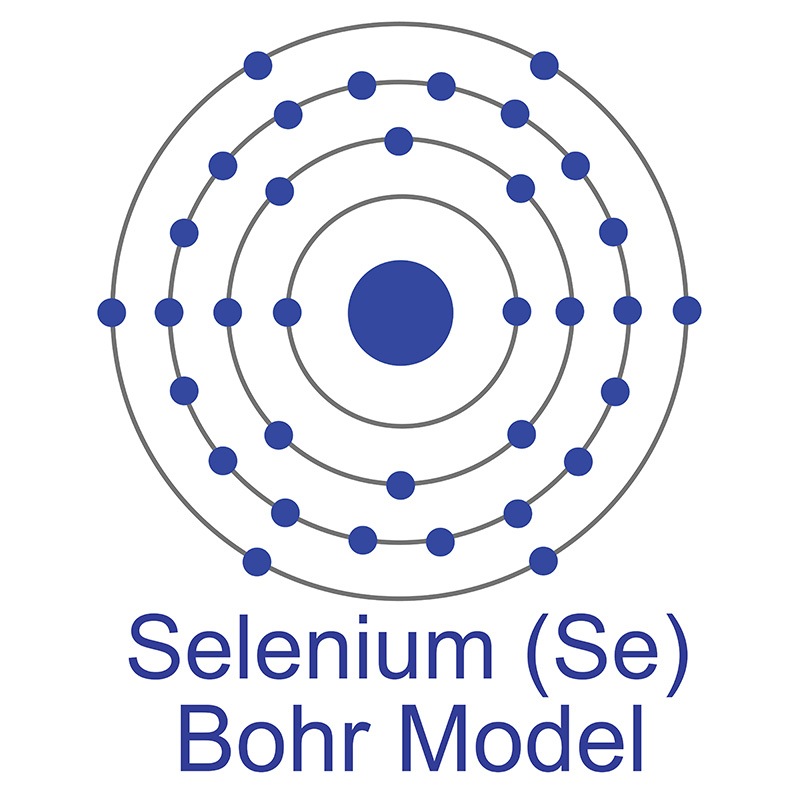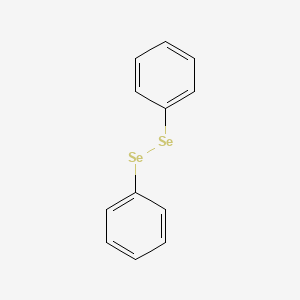SECTION 1. IDENTIFICATION
Product Name: Diphenyl Diselenide
Product Number: All applicable American Elements product codes, e.g. DPH-SE2-018-P
, DPH-SE2-02-P
, DPH-SE2-025-P
, DPH-SE2-03-P
CAS #: 1666-13-3
Relevant identified uses of the substance: Scientific research and development
Supplier details:
American Elements
10884 Weyburn Ave.
Los Angeles, CA 90024
Tel: +1 310-208-0551
Fax: +1 310-208-0351
Emergency telephone number:
Domestic, North America: +1 800-424-9300
International: +1 703-527-3887
SECTION 2. HAZARDS IDENTIFICATION
Classification of the substance or mixture
GHS06 Skull and crossbones
Acute Tox. 3 H301 Toxic if swallowed.
Acute Tox. 3 H331 Toxic if inhaled.
GHS08 Health hazard
STOT RE 2 H373 May cause damage to organs through prolonged or repeated exposure.
GHS label elements
The substance is classified and labeled according to the Globally Harmonized System (GHS).


Hazard pictograms
GHS06 GHS08
Signal word Danger
Hazard-determining components of labeling:
diphenyl diselenide
Hazard statements
H301+H331 Toxic if swallowed or if inhaled.
H373 May cause damage to organs through prolonged or repeated exposure.
Precautionary statements
P280 Wear protective gloves/protective clothing/eye protection/face protection.
P261 Avoid breathing dust/fume/gas/mist/vapors/spray
P301+P310 IF SWALLOWED: Immediately call a POISON CENTER/ doctor.
P305+P351+P338 If in eyes: Rinse cautiously with water for several minutes. Remove contact lenses, if present
and easy to do. Continue rinsing.
P403+P233 Store in a well-ventilated place. Keep container tightly closed.
P501 Dispose of contents/container in accordance with local/regional/national/international
regulations.
Classification system:
NFPA ratings (scale 0 - 4)
4
0
0
Health = 4
Fire = 0
Reactivity = 0
HMIS-ratings (scale 0 - 4)
HEALTH
FIRE
REACTIVITY
3
0
0
Health = 3
Fire = 0
Reactivity = 0
Other hazards
Results of PBT and vPvB assessment
PBT: N/A
vPvB: N/A
SECTION 3. COMPOSITION/INFORMATION ON INGREDIENTS
Substances
CAS # / Substance Name
1666-13-3 diphenyl diselenide
Identification number(s)
EC number: 216-780-2
Index number: 034-002-00-8
SECTION 4. FIRST AID MEASURES
Description of first aid measures
General information:
Immediately remove any clothing soiled by the product.
Symptoms of poisoning may even occur after several hours; therefore medical observation for at least 48 hours
after the accident.
Remove breathing apparatus only after contaminated clothing have been completely removed.
In case of irregular breathing or respiratory arrest provide artificial respiration.
If inhaled:
Supply fresh air or oxygen; call for doctor.
In case of unconsciousness place patient stably in side position for transportation.
In case of skin contact: Immediately wash with soap and water; rinse thoroughly.
In case of eye contact: Rinse opened eye for several minutes under running water. Consult a physician.
If swallowed: Do not induce vomiting; immediately call for medical help.
Information for doctor:
Most important symptoms and effects, both acute and delayed:
No data available
Indication of any immediate medical attention and special treatment needed
No data available
SECTION 5. FIREFIGHTING MEASURES
Extinguishing media
Suitable extinguishing agents:
CO2, extinguishing powder or water spray. Fight larger fires with water spray or alcohol resistant foam.
Special hazards arising from the substance or mixture No data available
Advice for firefighters
Protective equipment: Mouth respiratory protective device.
SECTION 6. ACCIDENTAL RELEASE MEASURES
Personal precautions, protective equipment and emergency procedures Not required.
Environmental precautions:
Do not allow product to enter drains, sewage systems, or other water courses.
Inform respective authorities in case of seepage into water courses, or sewage systems.
Methods and materials for containment and cleanup:
Dispose contaminated material as waste according to item 13.
Ensure adequate ventilation.
Reference to other sections
See Section 7 for information on safe handling.
See Section 8 for information on personal protection equipment.
See Section 13 for disposal information.
SECTION 7. HANDLING AND STORAGE
Handling:
Precautions for safe handling
Thorough dedusting.
Ensure good ventilation/exhaustion at the workplace.
Open and handle receptacle with care.
Information about protection against explosions and fires: Keep respiratory protective device available.
Conditions for safe storage, including any incompatibilities:
Requirements to be met by storerooms and receptacles: No special requirements.
Information about storage in one common storage facility: Not required.
Further information about storage conditions: Keep receptacle tightly sealed.
Specific end use(s) No data available
SECTION 8. EXPOSURE CONTROLS/PERSONAL PROTECTION
Additional information about design of technical systems: No further data; see item 7.
Control parameters
Components with limit values that require monitoring at the workplace:
1666-13-3 diphenyl diselenide
PEL Long-term value: 0.2 mg/m3
as Se
REL Long-term value: 0.2 mg/m3
as Se
TLV Long-term value: 0.2 mg/m3
as Se
Additional information: The lists that were valid during the creation were used as basis.
Exposure controls
Personal protective equipment:
General protective and hygienic measures:
Keep away from foodstuffs, beverages and feed.
Immediately remove all soiled and contaminated clothing.
Wash hands before breaks and at the end of work.
Store protective clothing separately.
Breathing equipment:
In case of brief exposure or low pollution use respiratory filter device. In case of intensive or longer exposure use
respiratory protective device that is independent of circulating air.
Protection of hands:
Protective gloves
The glove material has to be impermeable and resistant to the product/ the substance/ the preparation.
Due to missing tests no recommendation to the glove material can be given for the product/ the preparation/ the
chemical mixture.
Selection of the glove material on consideration of the penetration times, rates of diffusion and the degradation
Material of gloves
The selection of the suitable gloves does not only depend on the material, but also on further marks of quality and
varies from manufacturer to manufacturer.
Penetration time of glove material
The exact break through time has to be found out by the manufacturer of the protective gloves and has to be
observed.
Eye protection:
Tightly sealed goggles
SECTION 9. PHYSICAL AND CHEMICAL PROPERTIES
Information on basic physical and chemical properties
Appearance:
Form: Powder
Color: Yellow
Odor: undistinguishable
Odor threshold: No data available.
pH: N/A
Melting point/Melting range: 59-62 °C (138-144 °F)
Boiling point/Boiling range: no data °C
Flash point: N/A
Flammability (solid, gas): Product is not flammable.
Ignition temperature:
Decomposition temperature: No data available.
Autoignition: No data available.
Danger of explosion: Product does not present an explosion hazard.
Explosion limits:
Lower: No data available.
Upper: No data available.
Vapor pressure: no data hPa
Density: No data available.
Relative density No data available.
Vapor density N/A
Evaporation rate N/A
Solubility in / Miscibility with
Water: Insoluble.
Partition coefficient (n-octanol/water): No data available.
Viscosity:
Dynamic: N/A
Kinematic: N/A
Solvent content:
Organic solvents: 0.0 %
VOC content: 0.0 g/l / 0.00 lb/gl
Solids content: 100.0 %
Other information No data available
SECTION 10. STABILITY AND REACTIVITY
Reactivity No data available
Chemical stability
Thermal decomposition / conditions to be avoided: No decomposition if used according to specifications.
Possibility of hazardous reactions No dangerous reactions known.
Conditions to avoid No data available
Incompatible materials: No data available
Hazardous decomposition products: No dangerous decomposition products known.
SECTION 11. TOXICOLOGICAL INFORMATION
Information on toxicological effects
Acute toxicity:
Primary irritant effect:
on the skin: No irritant effect.
on the eye: No irritating effect.
Sensitization: No sensitizing effects known.
Additional toxicological information:
Carcinogenic categories
IARC (International Agency for Research on Cancer)
1666-13-3 diphenyl diselenide 3
NTP (National Toxicology Program)
1666-13-3 diphenyl diselenide R
OSHA-Ca (Occupational Safety & Health Administration)
Substance is not listed.
SECTION 12. ECOLOGICAL INFORMATION
Toxicity
Aquatic toxicity: No data available
Persistence and degradability No data available
Behavior in environmental systems:
Bioaccumulative potential No data available
Mobility in soil No data available
Additional ecological information: Not known to be hazardous to water.
Results of PBT and vPvB assessment
PBT: N/A
vPvB: N/A
Other adverse effects No data available
SECTION 13. DISPOSAL CONSIDERATIONS
Waste treatment methods
Recommendation:
Must not be disposed of together with household garbage. Do not allow product to enter drains, sewage systems, or other water courses system.
Uncleaned packagings:
Recommendation: Disposal must be made according to official regulations.
SECTION 14. TRANSPORT INFORMATION
UN-Number
DOT, IMDG, IATA UN3283
UN proper shipping name
DOT, IATA Selenium compound, solid, n.o.s.
IMDG SELENIUM COMPOUND, SOLID, N.O.S.
Transport hazard class(es)
DOT
Class 6.1 Toxic substances
Label 6.1
IMDG, IATA
Class 6.1 Toxic substances
Label 6.1
Packing group
DOT, IMDG, IATA II
Environmental hazards:
Marine pollutant: No
Special precautions for user N/A
Danger code (Kemler): 60
EMS Number: F-A,S-A
Stowage Category B
Transport in bulk according to Annex II of
MARPOL73/78 and the IBC Code N/A
Transport/Additional information:
DOT
Quantity limitations On passenger aircraft/rail: 25 kg
On cargo aircraft only: 100 kg
IMDG
Limited quantities (LQ) .5kg
Excepted quantities (EQ) Code: E4
Maximum net quantity per inner packaging: 1 g
Maximum net quantity per outer packaging: 500 g
UN "Model Regulation": UN 3283 SELENIUM COMPOUND, SOLID, N.O.S., 6.1, II
SECTION 15. REGULATORY INFORMATION
Safety, health and environmental regulations/legislation specific for the substance or mixture
Sara
Section 355 (extremely hazardous substances):
Substance is not listed.
Section 313 (Specific toxic chemical listings):
Substance is listed.
TSCA (Toxic Substances Control Act):
Substance is listed.
Proposition 65
Chemicals known to cause cancer:
Substance is not listed.
Chemicals known to cause reproductive toxicity for females:
Substance is not listed.
Chemicals known to cause reproductive toxicity for males:
Substance is not listed.
Chemicals known to cause developmental toxicity:
Substance is not listed.
Carcinogenic categories
EPA (Environmental Protection Agency)
1666-13-3 diphenyl diselenide D
TLV (Threshold Limit Value established by ACGIH)
Substance is not listed.
NIOSH-Ca (National Institute for Occupational Safety and Health)
Substance is not listed.
GHS label elements
The substance is classified and labeled according to the Globally Harmonized System (GHS).
Hazard pictograms
GHS06d GHS08
Signal word Danger
Hazard-determining components of labeling:
diphenyl diselenide
Hazard statements
H301+H331 Toxic if swallowed or if inhaled.
H373 May cause damage to organs through prolonged or repeated exposure.
Precautionary statements
P280 Wear protective gloves/protective clothing/eye protection/face protection.
P261 Avoid breathing dust/fume/gas/mist/vapors/spray
P301+P310 IF SWALLOWED: Immediately call a POISON CENTER/ doctor.
P305+P351+P338 If in eyes: Rinse cautiously with water for several minutes. Remove contact lenses, if present
and easy to do. Continue rinsing.
P403+P233 Store in a well-ventilated place. Keep container tightly closed.
P501 Dispose of contents/container in accordance with local/regional/national/international
regulations.
Chemical safety assessment: A Chemical Safety Assessment has not been carried out.
SECTION 16. OTHER INFORMATION
Safety Data Sheet according to Regulation (EC) No. 1907/2006 (REACH). The above information is believed to be correct but does not purport to be all inclusive and shall be used only as a guide. The information in this document is based on the present state of our knowledge and is applicable to the product with regard to appropriate safety precautions. It does not represent any guarantee of the properties of the product. American Elements shall not be held liable for any damage resulting from handling or from contact with the above product. See reverse side of invoice or packing slip for additional terms and conditions of sale. COPYRIGHT 1997-2022 AMERICAN ELEMENTS. LICENSED GRANTED TO MAKE UNLIMITED PAPER COPIES FOR INTERNAL USE ONLY.
 See more Selenium products.
See more Selenium products. One of the most common uses for selenium is in
One of the most common uses for selenium is in 
